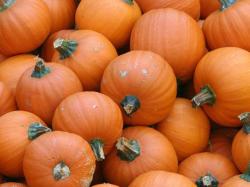Pumpkin Is The New Bacon
October 19, 2012 | 2 min to read

We carve them at Halloween, and we’ll bake them into the obligatory Thanksgiving pie, but pumpkins have never been very popular as an ingredient—until now. Suddenly, pumpkin is everywhere: in high-end cocktails and mass-market bagels; in Pumpkin Custard n’ Gingersnaps ($2.99 at Cracker Barrel, for a limited time only), and, of course, in the pioneering Starbucks Pumpkin Spice Latte (about $4 for a small cup, assuming your local branch hasn’t sold out). According to a seven-page PowerPoint from the MenuTrends database of the firm Datassential, “This year is on track to be one of the most active years for seasonal pumpkin menuing” and could top the 2011 record, when more than 60 pumpkin-related dishes appeared on the menus of America’s top 250 chain restaurants. (Datassential really gets into this stuff, further reporting, among other things, that in appetizers, pumpkin is more likely to be roasted than toasted or puréed.) Zero in on beverage menus, and the increase is even more striking: Pumpkin drink offerings have increased 400 percent during the past five years.
The weird thing about pumpkin’s rise to baconlike ubiquity is that pumpkin, on its own, is not a very appetizing food at all. A dense and stringy fruit, it needs the accompaniment of a lot of sugar and spices before it becomes particularly palatable. As a marketing tool, however, pumpkin is perfectly pitched for today’s eaters. The fact that it needs that extra flavoring? That’s a bonus, not a bug, as far as the restaurant business is concerned. A pumpkin dish, in the era of the locavore, has connotations of virtue—when you think of pumpkin, you think of something farm-grown and wholesome. That helps make it a permissible indulgence, even when what you’re eating is mainly just sugar and spice. Never mind the recipe realities—savor those associations!
To read the rest of the story, please go to: New York Magazine
